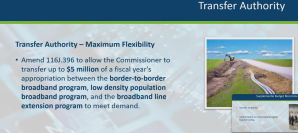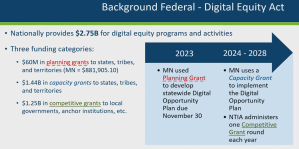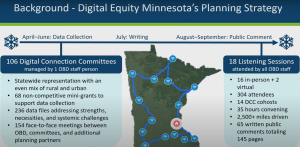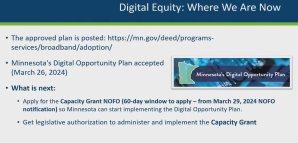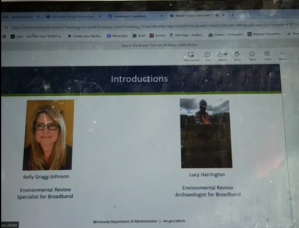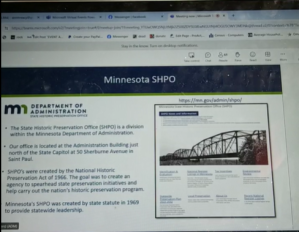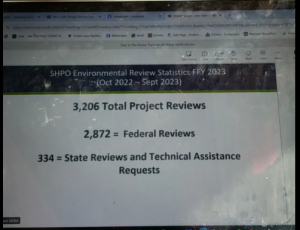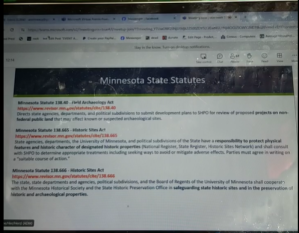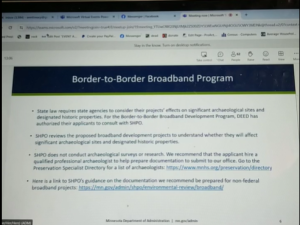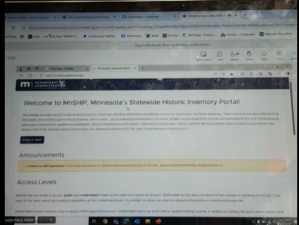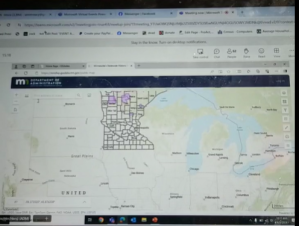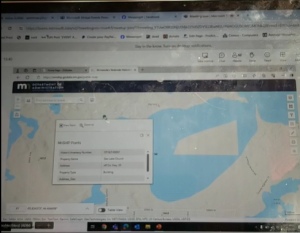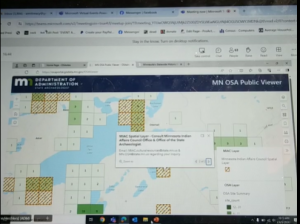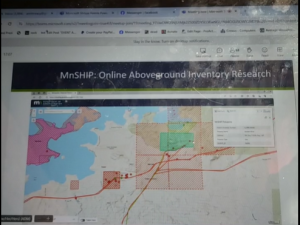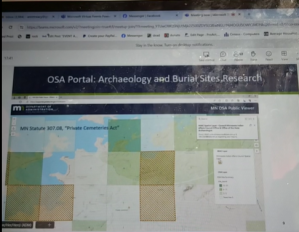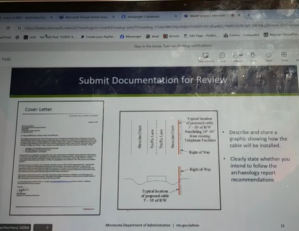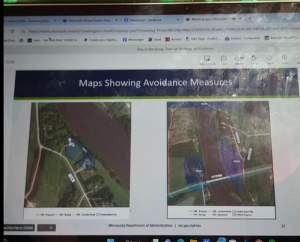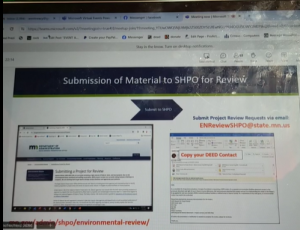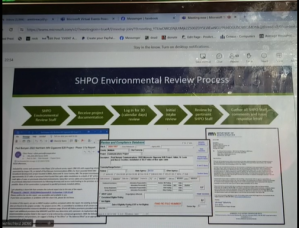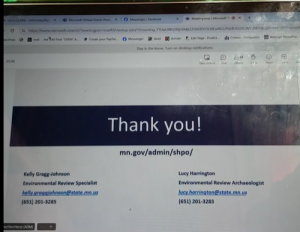ARTICLE 4 BROADBAND
Section 1. Minnesota Statutes 2022, section 116J.396, is amended by adding a subdivision to read:
Subd. 4. Transfer. The commissioner may transfer up to $5,000,000 of a fiscal year appropriation between the border-to-border broadband program, low density population broadband program, and the broadband line extension program to meet demand. EFFECTIVE DATE. This section is effective the day following final enactment.
Sec. 2. BROADBAND DEVELOPMENT; APPLICATION FOR FEDERAL FUNDING; APPROPRIATION.
(a) The commissioner of employment and economic development must prepare and submit an application to the United States Department of Commerce requesting State Digital Equity Capacity Grant Funding made available under Public Law 117-58, the Infrastructure Investment and Jobs Act.
(b) The amount awarded to Minnesota pursuant to the application submitted under paragraph (a) is appropriated to the commissioner of employment and economic development for purposes of the commissioner’s Minnesota Digital Opportunity Plan.”
Delete the title and insert:
“A bill for an act relating to state government; authorizing supplemental agriculture appropriations; modifying appropriations; providing broadband appropriation transfer authority; making policy and technical changes to agriculture provisions; establishing and modifying agriculture programs; requiring an application for federal broadband aid; requiring reports; appropriating money; amending Minnesota Statutes 2022, sections 3.7371, subdivisions 2, 3, by adding subdivisions; 17.133, subdivision 1; 18B.01, by adding a subdivision; 18B.26, subdivision 6; 18B.28, by adding a subdivision; 18B.305, subdivision 2; 18B.32, subdivisions 1, 3, 4, 5; 18B.33, subdivisions 1, 5, 6; 18B.34, subdivisions 1, 4; 18B.35, subdivision 1; 18B.36, subdivisions 1, 2; 18B.37, subdivisions 2, 3; 18C.005, subdivision 33, by adding subdivisions; 18C.115, subdivision 2; 18C.215, subdivision 1; 18C.221; 18C.70, subdivision 5; 18C.71, subdivision 4; 18C.80, subdivision 2; 18D.301, subdivision 1; 28A.10; 28A.21, subdivision 6; 31.74; 31.94; 32D.30; 41B.039, subdivision 2; 41B.04, subdivision 8; 41B.042, subdivision 4; 41B.043, subdivision 1b; 41B.045, subdivision 2; 41B.047, subdivision 1; 116J.396, by adding a subdivision; 223.17, subdivision 6; 232.21, subdivisions 3, 7, 11, 12, 13; Minnesota Statutes 2023 Supplement, sections 17.055, subdivision 3; 17.133, subdivision 3; 17.134, by adding a subdivision; 18C.421, subdivision 1; 18C.425, subdivision 6; 18K.06; 41A.19; Laws 2023, chapter 43, article 1, sections 2; 4; proposing coding for new law in Minnesota Statutes, chapters 18B; 18C; repealing Minnesota Statutes 2022, sections 3.7371, subdivision 7; 34.07; Minnesota Rules, parts 1506.0010; 1506.0015; 1506.0020; 1506.0025; 1506.0030; 1506.0035; 1506.0040.”
With the recommendation that when so amended the bill be re-referred to the Committee on Ways and Means.
The report was adopted
ARTICLE 8
BROADBAND AND PIPELINE SAFETY
Section 1. Minnesota Statutes 2022, section 116J.395, subdivision 6, is amended to read:
Subd. 6. Awarding grants. (a) In evaluating applications and awarding grants, the commissioner shall give priority to applications that are constructed in areas identified by the director of the Office of Broadband Development as unserved.
(b) In evaluating applications and awarding grants, the commissioner may give priority to applications that:
(1) are constructed in areas identified by the director of the Office of Broadband Development as underserved;
(2) offer new or substantially upgraded broadband service to important community institutions including, but not limited to, libraries, educational institutions, public safety facilities, and healthcare facilities;
(3) facilitate the use of telehealth and electronic health records;
(4) serve economically distressed areas of the state, as measured by indices of unemployment, poverty, or population loss that are significantly greater than the statewide average;
(5) provide technical support and train residents, businesses, and institutions in the community served by the project to utilize broadband service;
(6) include a component to actively promote the adoption of the newly available broadband services in the community;
(7) provide evidence of strong support for the project from citizens, government, businesses, and institutions in the community;
(8) provide access to broadband service to a greater number of unserved or underserved households and businesses; or
(9) leverage greater amounts of funding for the project from other private and public sources.
(c) The commissioner shall endeavor to award grants under this section to qualified applicants in all regions of the state. 104TH DAY] WEDNESDAY, APRIL 24, 2024 14265
(d) No less than the following percentages of the total border-to-border broadband grant funds awarded in the year indicated shall be reserved for applicants that agree to implement the workforce best practices as defined in paragraph (e):
(1) 50 percent in 2024;
(2) 60 percent in 2025; and
(3) 70 percent in 2026 and thereafter.
The applicant’s agreement to implement the workforce best practices as defined in paragraph (e) must be an express condition of providing the grant in the grant agreement.
(e) An applicant for a grant under this section is considered to implement workforce best practices only if the applicant can demonstrate that:
(1) there is credible evidence of support for the application and the applicant’s workforce needs on the project for which the grant is provided from one or more labor, labor-management, or other workforce organizations that have a track record of representing and advocating for workers or recruiting, training, and securing employment for people of color, Indigenous people, women, or people with disabilities in the construction industry; and
(2) all laborers and mechanics performing construction, installation, remodeling, or repairs on the project sites for which the grant is provided:
(i) are paid the prevailing wage rate as defined in section 177.42, subdivision 6, and the applicant and all of its construction contractors and subcontractors agree that the payment of prevailing wage to such laborers and mechanics is subject to the requirements and enforcement provisions under sections 177.27, 177.30, 177.32, 177.41 to 177.435, and 177.45, which the commissioner of labor and industry shall have the authority to enforce; or
(ii) receive from their employer:
(A) at least 80 hours of skills training annually, of which at least 40 hours must consist of hands-on instruction;
(B) employer-paid family health insurance coverage; and
(C) employer-paid retirement benefit payments equal to no less than 15 percent of the employee’s total taxable wages.
(f) In the event that the commissioner does not receive enough qualified applications to achieve the standards under paragraph (d), the commissioner shall consult with prospective applicants and labor and workforce organizations under paragraph (e), clause (1), to solicit additional qualified applications.
Sec. 2. [116J.3991] BROADBAND, EQUITY, ACCESS, AND DEPLOYMENT (BEAD).
Subdivision 1. Implementation. The commissioner shall implement a Broadband, Equity, Access, and Deployment (BEAD) Program that prioritizes applicants for state funding that demonstrate the following:
(1) commitment by the applicant to robust training programs with established requirements that are tied to uniform wage scales, job titles, and relevant certifications or skill codes
(2) use of a directly employed workforce, as opposed to a subcontracted workforce, to perform broadband placing, splicing, and maintenance work. Public entity applicants may meet this requirement by use of a directly employed workforce or committing to contract with an Internet service provider that will use a directly employed workforce;
(3) commitment to implement workforce best practices under section 116J.395, subdivision 6, paragraph (e), on the project or projects for which the applicant seeks public funding; and
(4) commitment to retaining a locally based workforce and establishing programs to promote training and hiring pipelines for underrepresented communities.
Subd. 2. Project evaluation. In projects funded by the BEAD Program, the criteria under subdivision 1 and section 116J.395, subdivision 6, paragraph (e), shall receive a priority point allocation in the point scheme for project applications, such that these criteria shall, together with points awarded for labor law compliance, constitute no fewer than 25 points of the evaluation scheme, out of 100. No fewer than 20 points must be based on an applicant’s forward-looking commitments regarding implementation of workforce best practices and other commitments listed in this section.
Subd. 3. Disclosures. Applicants’ disclosures responding to the criteria in subdivision 1 and section 116J.395, subdivision 6, paragraph (e), must be publicly available on the department website, and all workforce commitments made under this section and section 116J.395 shall become enforceable, certified commitments and conditions of the grant.
Subd. 4. Workforce plan data. (a) Grantees in projects funded by the program under this section and section 116J.395 are required to provide in biannual reports information on their workforce, including:
(1) whether the workforce will be directly employed by the grantee or the Internet service provider or whether work will be performed by a subcontracted workforce;
(2) the entities that the contractor plans to subcontract with in carrying out the proposed work, if any, and the entity employing the workforce in each job title;
(3) the job titles and size of the workforce, including the number of full-time equivalent positions that are required to carry out the proposed work over the course of the project;
(4) for each job title required to carry out the proposed work, a description of wages, benefits, applicable wage scales including overtime rates, and a description of how wages are calculated; and
(5) any other workforce plan information as determined by the commissioner.
(b) Following an award, the workforce plan and the requirement to submit ongoing workforce reports shall be incorporated as material conditions of the contract with the department and become enforceable, certified commitments. The commissioner must conduct regular reviews to assure compliance and take appropriate measures for enforcement.
Subd. 5. Failure to meet requirements or falsification of data. If successful applicants fail to meet the program requirements under this section, or otherwise falsify information regarding such requirements, the commissioner shall investigate the failure and issue an appropriate action, up to and including a determination that the applicant is ineligible for future participation in broadband grant programs funded by the department.
Subd. 6. Federal grant requirements. The commissioner shall have authority not to enforce or apply any requirement of this section to the extent that the requirement would prevent the state from receiving federal broadband grant funding.
Sec. 3. [181.912] UNDERGROUND TELECOMMUNICATIONS INFRASTRUCTURE.
Subdivision 1. Definitions. For the purposes of this section:
(1) “directional drilling” means a drilling method that utilizes a steerable drill bit to cut a bore hole for installing underground utilities;
(2) “safety-qualified underground telecommunications installer” means a person who has completed underground utilities installation certification under subdivision 3;
(3) “underground telecommunications utilities” means buried broadband, telephone and other telecommunications transmission, distribution and service lines, and associated facilities; and
(4) “underground utilities” means buried electric transmission and distribution lines, gas and hazardous liquids pipelines and distribution lines, sewer and water pipelines, telephone or telecommunications lines, and associated facilities.
Subd. 2. Installation requirements. The installation of underground telecommunications infrastructure that is located within ten feet of existing underground utilities or that crosses said utilities must be performed by safety-qualified underground telecommunications installers as follows:
(1) the location of existing utilities by hand or hydro excavation or other accepted methods must be performed by a safety-qualified underground telecommunications installer;
(2) where telecommunications infrastructure is installed by means of directional drilling, the monitoring of the location and depth of the drill head must be performed by a safety-qualified underground telecommunications installer; and
(3) no less than two safety-qualified underground telecommunications installers must be present at all times at any location where telecommunications infrastructure is being installed by means of directional drilling.
Subd. 3. Certification Standards. (a) The commissioner of labor and industry shall approve standards for a safety-qualified underground telecommunications installer certification program that requires a person to:
(1) complete a 40-hour initial course that includes classroom and hands-on instruction covering proper work procedures for safe installation of underground utilities, including:
(i) regulations applicable to excavation near existing utilities;
(ii) identification, location, and verification of utility lines using hand or hydro excavation or other accepted methods;
(iii) response to line strike incidents;
(iv) traffic control procedures;
(v) use of a tracking device to safely guide directional drill equipment along a drill path; and
(vi) avoidance and mitigation of safety hazards posed by underground utility installation projects;
(2) demonstrate knowledge of the course material by successfully completing an examination approved by the commissioner; and
(3) complete a four-hour refresher course within three years of completing the original course and every three years thereafter in order to maintain certification.
(b) The commissioner must develop an approval process for training providers under this subdivision, and may suspend or revoke the approval of any training provider that fails to demonstrate consistent delivery of approved curriculum or success in preparing participants to complete the examination.
Sec. 4. Minnesota Statutes 2022, section 216B.17, is amended by adding a subdivision to read:
Subd. 9. Telecommunications and cable communications systems. (a) The commission has authority under this section to investigate, upon complaint or on its own motion, conduct by or on behalf of a telecommunications carrier, telephone company, or cable communications system provider that impacts public utility or cooperative electric association infrastructure. If the commission finds that the conduct damaged or unreasonably interfered with the function of the infrastructure, the commission may take any action authorized under sections 216B.52 to 216B.61 with respect to the provider.
(b) For purposes of this subdivision:
(1) “telecommunications carrier” has the meaning given in section 237.01, subdivision 6;
(2) “telephone company” has the meaning given in section 237.01, subdivision 7; and
(3) “cable communications system provider” means an owner or operator of a cable communications system as defined in section 238.02, subdivision 3.
Sec. 5. Minnesota Statutes 2022, section 299J.01, is amended to read: [The rest of the bill is focused on pipelines]






































































